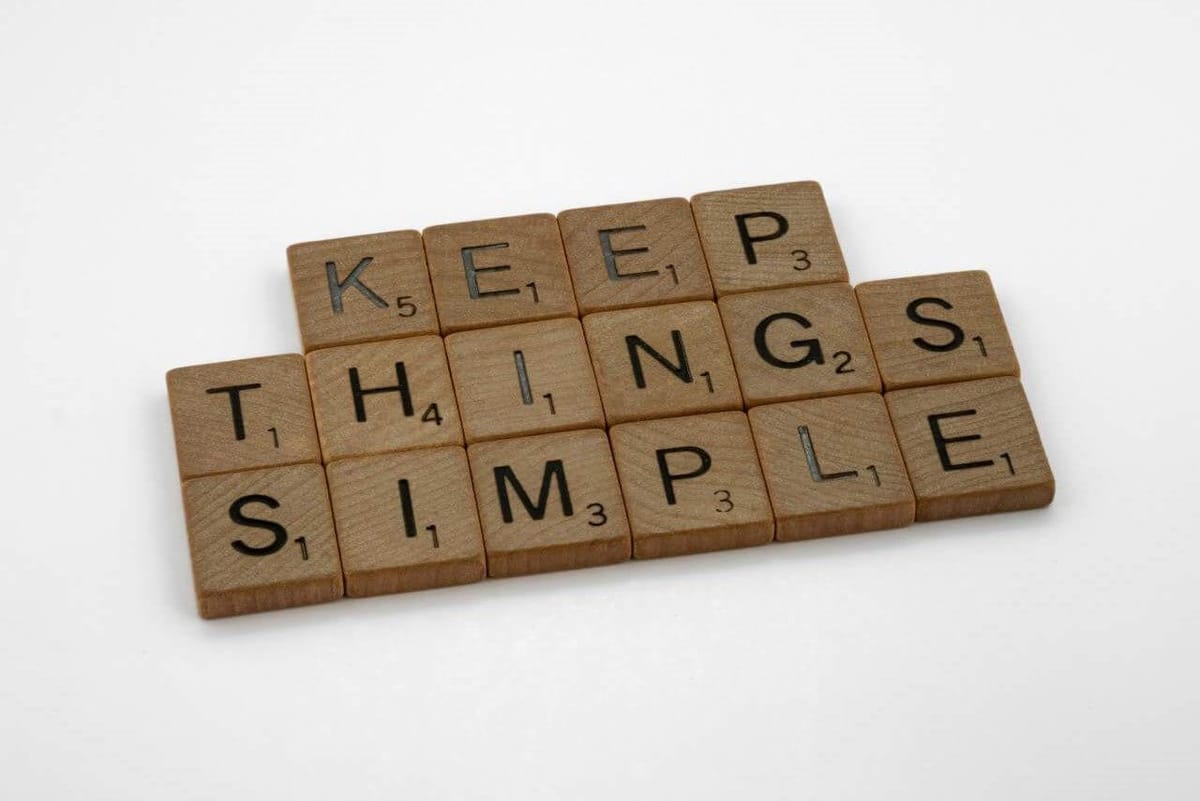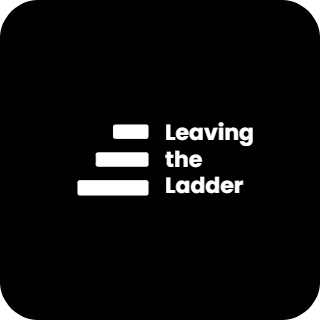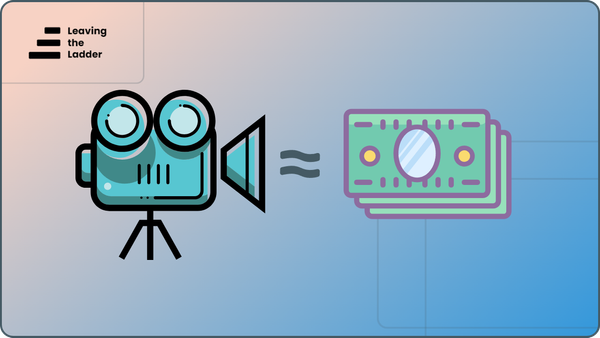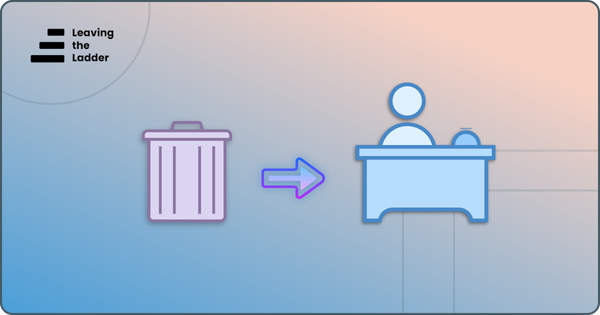Three Types of Business Problems All Entrepreneurs Face
Understanding the three types of problems—lack of resources, lack of picture, and lack of accountability—matters for entrepreneurs striving to solve issues effectively. Here’s how you can identify and tackle each problem type to drive success.

There are Three Types of Problems, and Understanding Them Matters
“Problems are only problems until they are paired with solutions.”
~Someone Super Smart
This is a nice thought, and quotes like this will probably get you a lot of likes on Facebook.
But let's test it out.
Take 8 seconds and think seriously about a problem you’re facing right now. Now, say out loud, “If I had a solution, my problem would be gone!”
Is your problem gone?
If the answer is yes, then you might want to scroll down and unsubscribe, because this is going to get boring for you.
But if, like me, you need more than easy sayings to solve problems, keep reading. This is how I break problems down so I can actually solve them.
Before we get into the three types of problems, remember this simple cycle:
- You cannot control outcomes.
- You cannot control other people.
- When it’s your turn to decide, you have to make a choice. Even if you’re wrong, make a decision.
The Three Types of Problems
- Lack of Resources
You don’t have the tools, knowledge, or experience you need. - Lack of Picture
You do have the tools, knowledge, and experience, but don’t know how to use them. - Lack of Accountability
You have the resources and know how to use them, but you choose not to.
1) Lack of Resources
Being able to solve problems—even if you get it wrong—helps you become better at solving future problems.
Step 1: Label Your Position
When you have a problem you can’t solve, ask yourself, “Do I know what tools, talent, or software I need?” If the answer is no, you’re lacking resources. This is actually good.
The only thing worse than not having the right resources is thinking you have them when you actually don’t.
So put a label on it.
Chances are, you’re going to make mistakes along the way. You’ll miss a step, make a bad guess, or come up with the wrong solution.
And what happens after you realize you’re wrong? That’s the important part.
Learning from mistakes is what makes you grow. How you deal with being wrong will decide if you move forward—or if your business, and maybe your dream, fails.
Here’s an Example
When I started my second company, I knew that selling our products online would give us a great chance to succeed. We needed to reach more people, and everyone is online.
But selling online has a lot of hurdles. The first one was choosing which platform to use for our store.
There are so many platforms, each with different features. But I had no idea what features we’d need. I’d never run an e-commerce store before. So, how could I know which one to choose?
Getting it wrong could cost a lot in both money and time, which I didn’t have much of.
So, I learned what I could about each platform, made my best guess, and chose one. My team and I spent hundreds of hours building our store.
And guess what—it sucked.
- The SEO sucked.
- The navigation sucked.
- The product pages sucked.
- The store management sucked.
- And it was really ugly.
But it did get us some customers and sales. Best of all, our little site put our products in the hands of people who needed them.
Eventually, we realized that the platform I chose wasn’t enough for what we needed. And that’s OK. By choosing the wrong platform, I learned exactly what features we’d need in the future.
Now I had tools, knowledge, and experience—all things I didn’t have before I made the wrong choice.
Takeaway
Next time you face a problem you don’t have the resources to solve (and you get it wrong), take a piece of paper and write it down. List three to five reasons why the choice you made was wrong.
Write it down. Acknowledge it. Move on.
If you do this, you’ll accomplish more than you can imagine.
2) Lack of Picture
Story Time
For six years, while I was building our e-commerce branch, we had a recurring problem. Here’s how it went:
- First, we didn’t know it was a problem.
- Next, we noticed it was a problem, but ignored it.
- Then, we sort of understood it, but couldn’t figure out a solution.
- Finally, by year six, we got serious about fixing it.
The problem? We were losing money on freight costs.
Our first platform couldn’t handle our shipping needs. Neither could the second. Nor the third. But we had other things to deal with, and we were profitable, so we let it go.
Then, in year five, things changed.
- We lost our best-selling products.
- We were losing profit on most other products.
- We were trying to enter new markets, all in the same year.
That’s when we realized we had to get our shipping costs right.
It was my job to lead the team in solving this. So, we did what anyone would do: we checked our platform, we looked at other software options, and we even considered building our own system.
Then, in an executive meeting, my partner (who wasn’t involved in e-commerce) asked, “Why can’t you just estimate the total shipping cost by month or quarter, divide that by the products shipped, and charge that number?”
I got irritated. I argued all the reasons this wouldn’t work. But then, I realized his question made sense. We didn’t have to calculate every single product perfectly.
Within two days, we were testing a new system. Within a week, it was up and running.
Takeaway
When a problem seems too complex, there’s a good chance you’re too close to it. Leaders need peers who can see things from a different perspective and who want them to succeed.
3) Lack of Accountability
I recently heard Jordan Peterson say something like, “People fear two things the most: painful death and public humiliation. The only thing scarier would be a painful death in a very humiliating way.”
It made me think about accountability in business. Admitting when you’re clueless is tough, but it’s harder when you know what to do and still don’t do it. This is the most challenging problem type: knowing better but doing the wrong thing anyway.
Early in my business, I was working hard day and night. But as things got more stable, I started getting complacent.
A few years in, we upgraded to a bigger shop but didn’t have office space for our online support team. No problem; I turned a guest house I owned, “The Cabin,” into an office.
This kept me close to home. I could save time on commuting and even pop in for lunch—awesome.
But this convenience and success led to laziness. Late nights and late mornings became normal. I missed meetings and ignored time zones for our customers and vendors.
I knew this wasn’t OK. I could see the trust of my team slipping. I was letting them down at crucial times.
Around this time, I hired a business coach—someone who understood entrepreneurship and could be honest with me.
His job was simple but crucial: to keep me accountable to my values and potential.
Takeaway
- You have to want accountability. If you don’t want to change, no one can make you.
- They have to tell you the truth. Accountability depends on truth, even if it’s uncomfortable.
- Respectful Authority. This person should not be a peer; they should be someone you respect enough to care about what they say.




